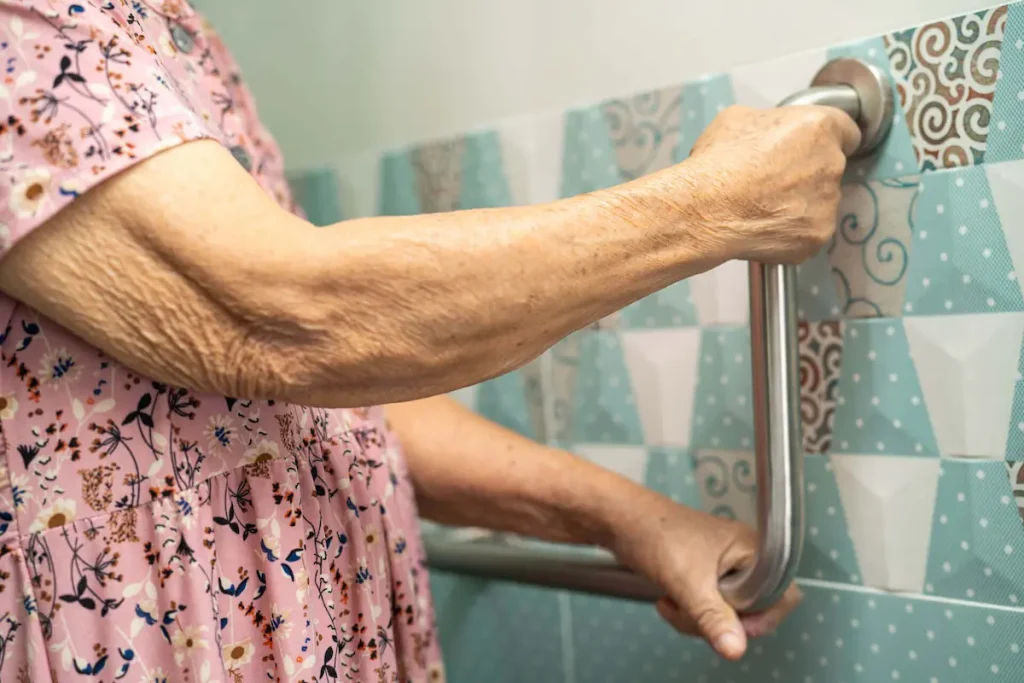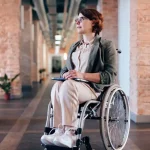Senior bathing can be challenging and risky if appropriate care isn’t taken. Slippery floors and a lack of needed bath equipment can make bath time unsafe. If these problems are left unaddressed, the senior may decide that bathing is too much trouble.
Why doesn’t Dad bathe?
But there are ways to make senior bathing simple, safe and enjoyable. Let’s start with water.
What’s a good water temperature?
Ideally, the ideal water temperature for bathing and showering should be only one or two degrees above the body temperature of 98.6 degrees Fahrenheit.
So a temperature range of 98 degrees to 100 degrees is best. There are dangers for the elderly when bathing in extremely hot or cold water.
Bath water temperatures of 102 degrees F. and above are dangerous to the elderly, especially those with heart and cardiovascular problems.
Too Hot
Hot water can cause excessive blood flow to the skin, which can cause cardiovascular strain. The heart may work too hard, which is dangerous for seniors with heart conditions.
Burns can also occur in hot baths and showers. Hot water of 120 degrees Fahrenheit (50 degrees Celsius) is far too hot for safe bathing. Water can cause serious burns on the skin in very little time.
Seniors who cannot move quickly enough to shut off the faucet risk burns that can lead to serious infections.
Too Cold
Senior bathing with cold water also affects the body. Cold water can cause blood vessels to narrow. This reaction will reduce the amount of blood that flows to a person’s skin, internal organs, and heart.
A reduction in blood volume can cause the heart to strain. Body heat is lost if the bath water is colder than the core body temperature.
Cold water can cause sudden lowering of body temperature and blood vessel constriction in the elderly.
Simple Tips for Safe Bathing
- Caregivers should adjust the hot water tank to ensure that bath water will never be too hot. Buy and use a bath thermometer to check the water temperature in the bath or shower, so there is no guessing.
- Always heat the bathroom to a temperature that is comfortable for senior bathing.
- Test the bath water before letting the patient enter the tub or shower. Let the senior test it with a finger or toe to see if it is comfortable for them.
Even if the person can bathe herself, the caregiver should stay alert and watch and listen, so she can respond immediately to a problem when the patient is bathing independently. - If the person depends on you for bathing, take time to prepare the room’s and water’s temperature. Making the bath and room temperatures similar means the body will not have to adjust and strain.
- Set up the bath seat, the transfer board, and the chair or wheelchair to safely transfer the patient into the tub or shower.
- Be especially careful when assisting the patient entering the tub or shower so that you don’t slip and hurt yourself. Don’t force or hurry the patient.
The goal of senior bathing is a safe, comfortable bath for both patient and caregiver.
Bath Equipment
Caregiver-aid has the equipment to make bathing and showering safer for you and your loved ones. We have three different Bath Safety Sets: a shower/bath seat, a handheld shower head, and a non-slip bath mat.
The first one is the Bath Safety Set #1 has a seat with no back, and the Lumex handheld shower head with a mat.
Bath Safety Set # 2 has a seat with a back on it and also includes the shower head and mat.
The third is Bath Safety Set #3 has a padded bench which is necessary for patients who need to transfer from a wheelchair into the tub or shower. The mat and shower head come with it too.


